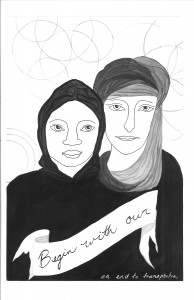From the Archives — On Being Inside: Violence in Women’s Prisons
I picked up a publication titled “Heresies #6” at a used book store a couple of weeks ago. It was a special issue of the publication focused on women and violence. There is a lot in it that is interesting. As part of my ongoing commitment to highlight the ways that feminism addressed prisons in the past, I am sharing an article from Heresies today in its entirety. The essay is instructive because it shows how some feminists engaged the realities of prison at a particular historical moment. As you read, what would you change to make the essay more applicable to the 21st century? What would you keep the same? Finally, as a fun activity, count the number of times the word “patriarchy” appears throughout the text.
On Being Inside: Violence in Women’s Prisons
[Heresies is free upon request to women in prisons and mental institutions.]
Dedicated to our friends of Bedford Hills, without whose constant strength and guidance we couldn’t go on
If you want to understand what Hell is all about, take a short trip into the barred realm of a women’s prison. This is a journey in time and space, a reality appearing so Kafkaesque that it resembles science fiction, a different dimension. Here a whole colony of women live in oblivion; sleepwalk, more dead than alive. In the total absence of attention from the outside world, they become easy targets for a system which feels free to treat them like animals, to harass them while they are too powerless to fight back. Those who do decide to fight take the brunt and serve as disciplinary examples to the rest, the faster for everyone to learn how to survive without making trouble, without dignity, without the memory of what it is to be yourself, a human being, a woman.Prison is a cage. Yet so is a tenement in the ghetto. So is the typing pool of a corporation. So is a factory. So is even the isolation of a suburban dollhouse. There are cages and cages. Prison is the cage where even the illusion of freedom is removed from your dreams.
Women are targets of violence on the streets, in the family, at work, on welfare. Their assailants are men they don’t know and men they love, the state, the system, society at large. This violence grows like cancer and becomes itself a powerful prison from which there is no escape. It is perhaps easier to jump the fence at Bedford Hills than to overcome the societal dictatorship which deprives women of their self-respect, their integrity, their safety, their means for survival. These invisible bars to self-fulfillment and survival are unbending and hard; they are the reasons why women ultimately end up in prison. One prison simply leads to another.
Prisons in general are concentration camps. They are the places where the poor, those with the wrong color of skin, the wrong kind of language, the wrong background, the wrong political ideas can be contained, isolated and held responsible for the failures and crises of society at large.

